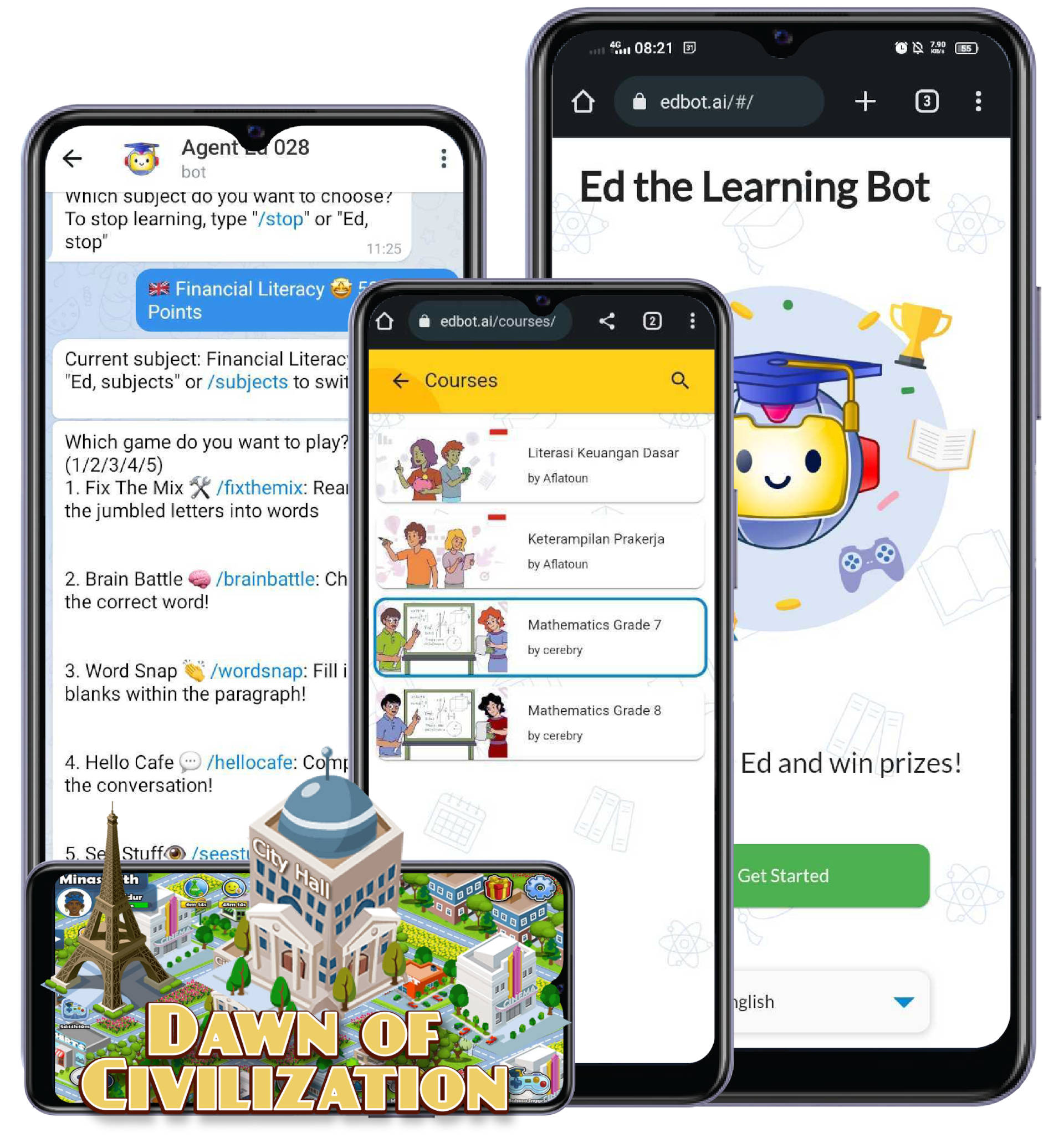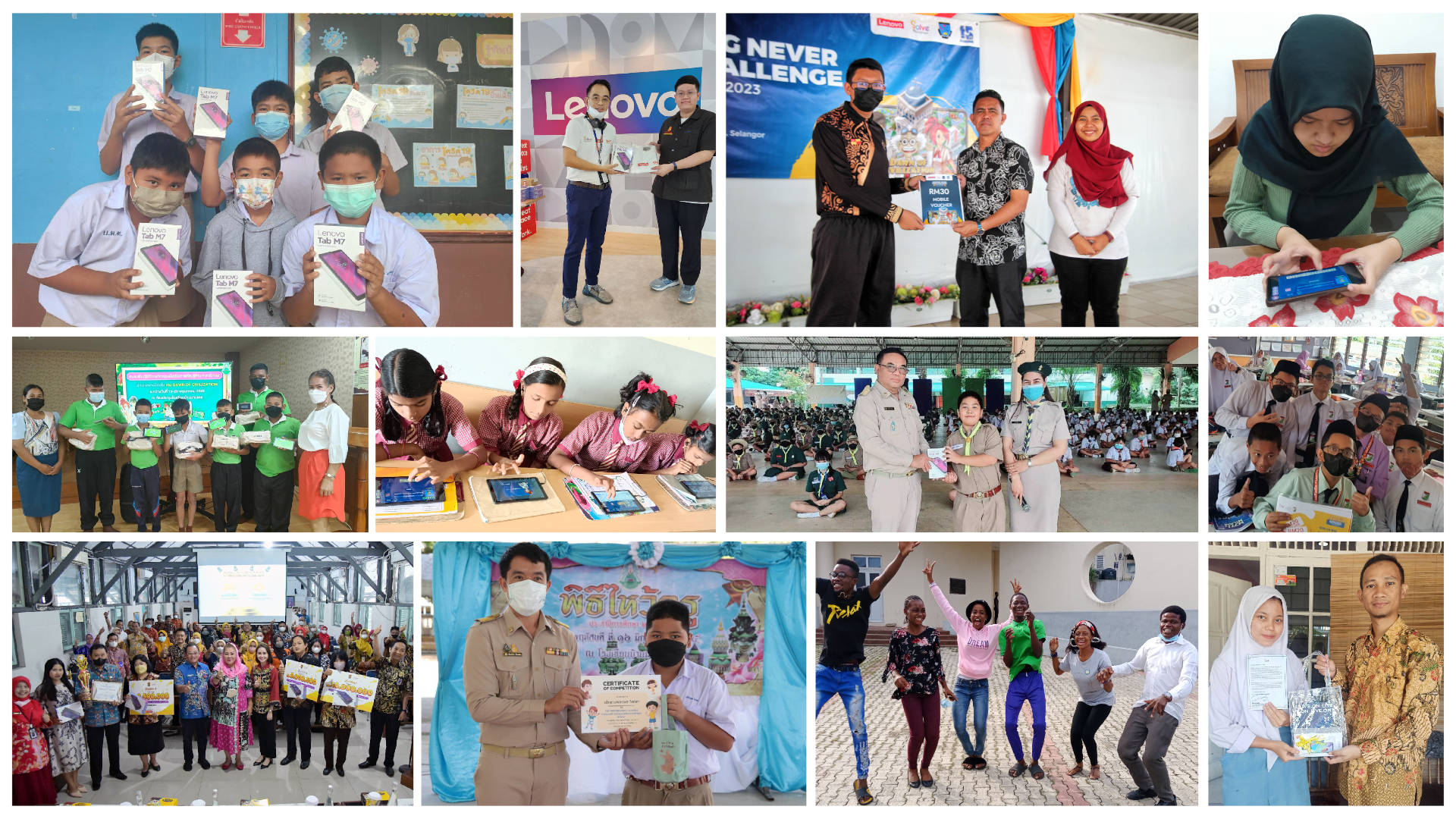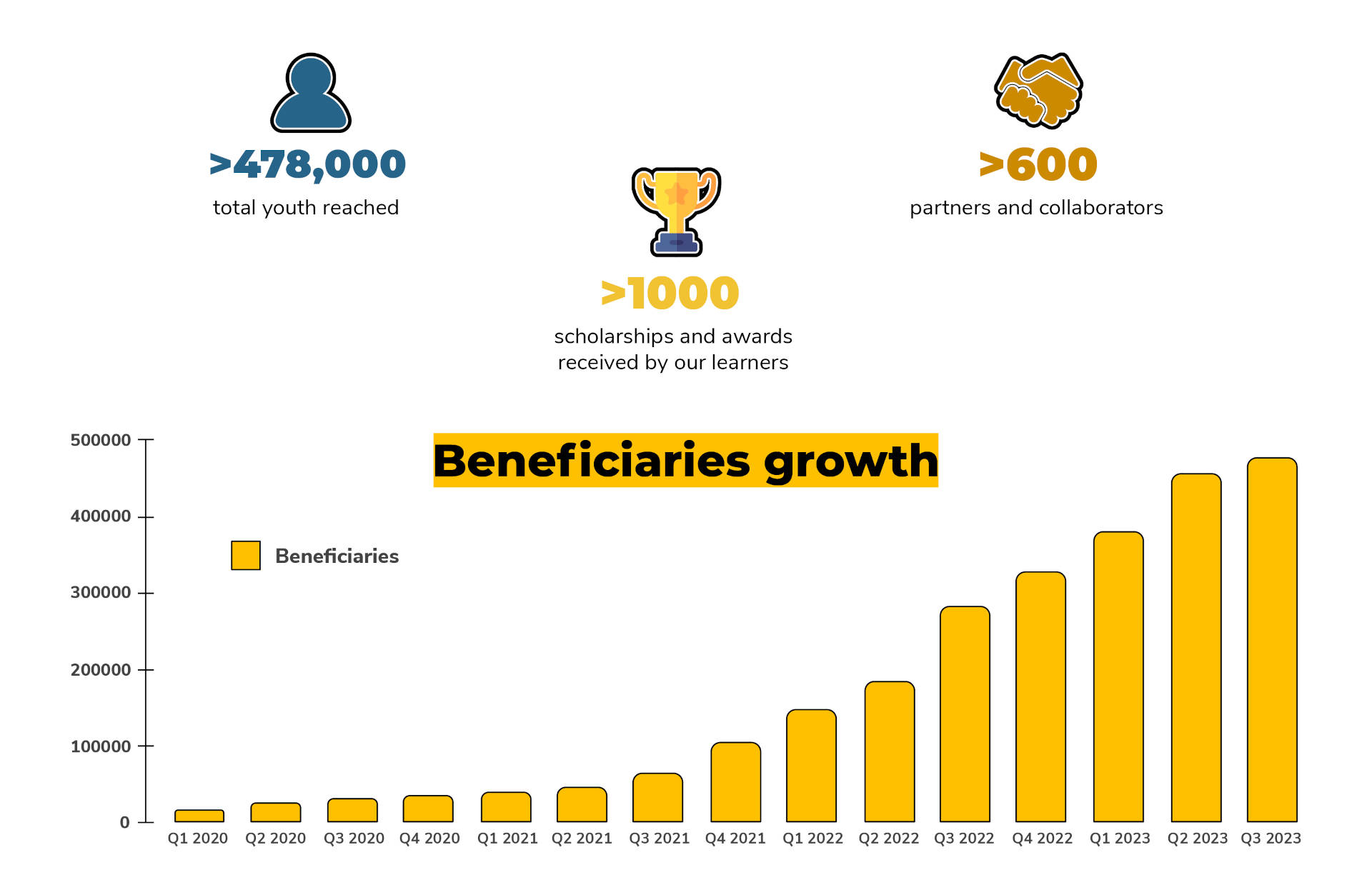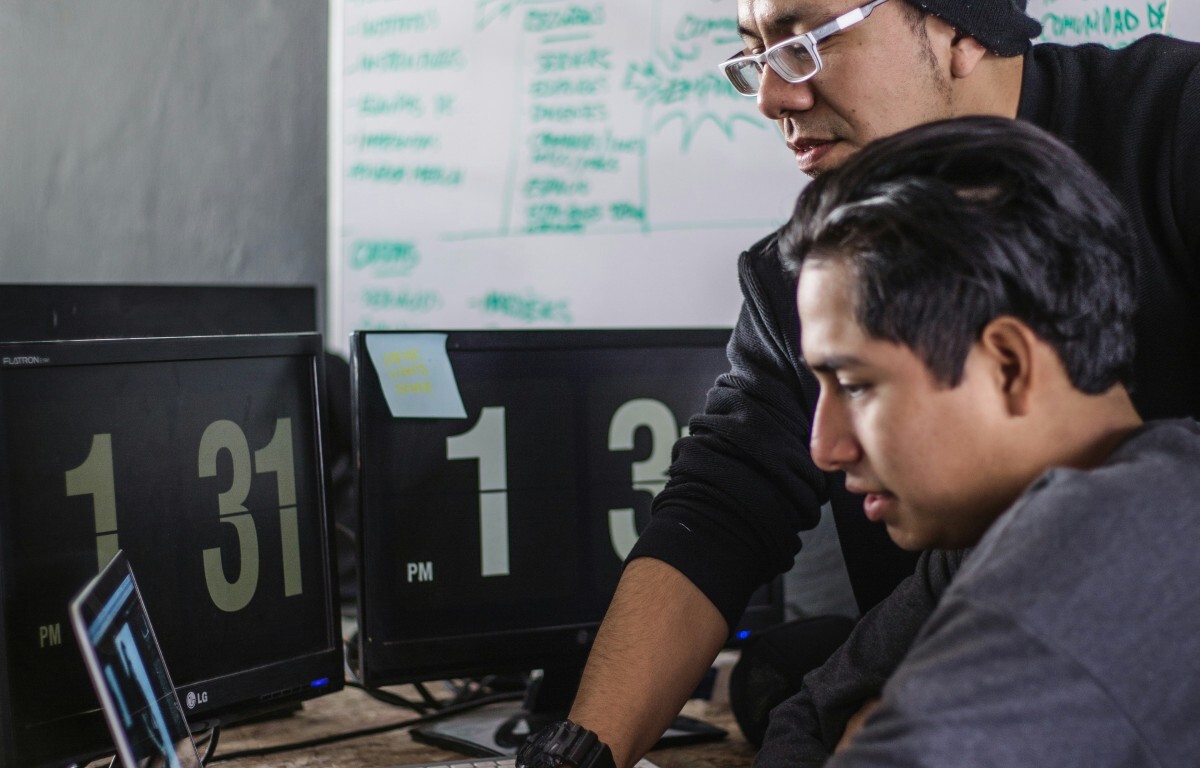
By Talitha Amalia, SOLVE Education! Foundation
In an era of swift digital transformations, the gulf between technology’s promise as an educational equaliser and its delivery has often remained unbridged. This disparity largely stems from the need for inventive approaches that seamlessly integrate the digital sphere and practical learning.
First, let’s illustrate the current scenario of the educational landscape in Southeast Asia.
In Southeast Asia, the vibrant hues of cultural diversity are coupled with a stark mosaic of educational challenges and opportunities. While strides have been made in basic education—most countries now boast near-universal primary school enrollment—significant challenges persist. Absolute learning levels, often measured by standardised tests or assessments, remain low in many Southeast Asian countries.
The promise of digital education, ushered in by the technological revolution, has been hampered by a persistent digital divide. Access to digital resources is uneven, especially between urban and rural areas, creating a rift in the quality of education received. The shift to remote learning after the COVID-19 pandemic has further exposed and exacerbated these inequities.
Moreover, a skills gap looms over the region’s youthful population. Despite increasing graduation rates, employers often find that graduates’ skills do not match industry requirements, highlighting a disconnect between educational curricula and the rapidly evolving job market.
Despite regional governments acknowledging and acting on these issues, the enormity of educational challenges calls for innovative, scalable, and sustainable alternatives to conventional pedagogy.
Redefining education through cloud-and-AI-fueled educational interventions
Solve Education!’s method hinges on two innovative platforms, ‘Ed’ The Learning Bot and ‘Dawn of Civilisation‘, both engineered, developed, and sustained using a powerful cloud infrastructure, exemplifying the harmonious integration of cloud computing into contemporary education.

Solve Education!’s Innovative Learning Tools: Ed the Learning Bot and Dawn of Civilisation Game
‘Ed‘, an AI-powered chatbot, serves as an adaptable tutor. It employs AI algorithms not just for personalising learning experiences but also for content development, enhancing the relevance and engagement of the material. It covers diverse areas, from English and STEM to financial literacy, emphasising its versatility and adaptability in meeting learners’ needs.
Simultaneously, ‘Dawn of Civilisation‘ amalgamates gaming and education. Accessible offline, this city-planning game-based learning platform fluidly combines the allure of gameplay with the enriching learning process. In partnership with local charities in countries like Thailand and India, we trained implementers to adapt our tools for rural teaching. Teachers travel to cities, download content onto tablets, and periodically upload progress data. An Indian partner’s report underscores the success of this blended approach, helping children recover from learning loss. This demonstrates how digital technology can strategically overcome limitations to deliver quality education.
Central to Solve Education!’s approach is a unique incentive system powered by cloud and AI technologies, which fosters internal and external motivation among learners and teachers.
- Our peer voting programme, conducted by learners, utilises tech-enabled grants and rewards such as internet data, food vouchers, and health checkups to finance their educational journey, linking motivation to meaningful learning outcomes. With the scalability offered by cloud technology, we can remotely monitor the programme’s implementation, keeping operational costs minimal.
- At the same time, we are building a supportive network through our youth ambassador programme, cultivating a passion for learning and personal growth. Each ambassador forms an in-person or remote learning community, developing vital life skills and creating a nurturing environment for learners.
- Acknowledging teachers’ critical role in promoting digital literacy. We support teachers in promoting digital literacy through grants and awards, fostering adaptability to technological changes. Technology is not only used for education but also to create an efficient, scalable, and impactful learning environment, channelling more resources to programs rather than administrative overheads.

Solve Education!’s beneficiaries actively engaged with the programme
Implications for Inclusive Growth in Southeast Asia: Key Takeaways
- Proven Scalability: Utilising technology, the team has successfully implemented programs across geographically diverse regions, underscoring the scalability of tech-driven educational solutions. These initiatives have the potential to impact learners across Southeast Asia and beyond, regardless of location.
- Inclusivity and Accessibility: Through the design of platforms like ‘Dawn of Civilisation‘ to function without internet connectivity, the initiative has contributed to bridging the digital divide. This highlights the idea that with strategic design and planning, technology can make education accessible to even the most remote or under-resourced communities.
- Engagement and Motivation: The positive response to the gamification and personalised learning approaches demonstrates how these methods can substantially enhance student engagement and motivation, essential components for effective learning.
- Capacity Building and Lifelong Learning: The inclusion of subjects beyond the traditional academic curriculum, such as financial literacy, emphasises the significance of holistic, lifelong learning for driving inclusive growth.
- Promotion of Local Partnerships: Our collaboration with local partners exemplifies the power of working together to contextualise and adapt education solutions, thereby amplifying their impact.
- Enhanced Efficiency: Leveraging cloud computing, the team efficiently develops, manages, and deploys innovative solutions, even remotely, showcasing how such technology maximises productivity and effectiveness in education.
- Facilitation of Overseas Partnerships: Cloud computing facilitates seamless interaction with partners, erasing geographical distances and fostering an inclusive global learning community. Solve Education!’s cloud-enabled initiatives have positively impacted nearly 500,000 lives across 600 community partners, reaching underprivileged communities in Southeast Asia and beyond through collaborations with governments, schools, NGOs, and stakeholders.

Solve Education!’s Expanding Impact Over Time
Through technology, particularly cloud computing and AI, we see immense potential for reshaping the landscape through transformative impact, which many would associate the promise of “Tech for Good” with. At Solve Education!, we are building pathways to a brighter, technologically-empowered future. While our journey towards an inclusive future is ongoing, encouraging progress is evident. I invite you, our reader, to consider how you can contribute to this tech-driven revolution.
About the Writer
Talitha Amalia, currently at the helm of operations at Solve Education Foundation, carries a rich blend of experience in media, research, education, and management. Rooted in her own journey from a small village in West Java to earning scholarships at prestigious institutions, her belief in the transformative power of education runs deep. Her expertise in building global partnerships and commitment to humanitarian causes reflect her dedication to international educational development. Having personally experienced the empowering potential of education, Talitha’s insights carry both the weight of professional experience and passionate advocacy for underprivileged youth.
About Solve Education Foundation
Solve Education! works with education and technology experts to create an educational game app which aims to develop students’ hunger for learning and prepares them for the workforce of the future. As a not-for-profit organisation, their vision is for future generations to have equal access to the knowledge economy.
The views and recommendations expressed in this article are solely of the author/s and do not necessarily reflect the views and position of the Tech for Good Institute.






